MBDA has delivered the first batch of ASTER air defence missiles under a fast-tracked production initiative led by the Organisation for Joint Armament Cooperation (OCCAR).
The Franco-Italian defence group delivered the munitions less than two and a half years after the joint order was placed. The programme, which includes France, Italy and the United Kingdom, aims to produce nearly 1,000 ASTER missiles to replenish and enhance European air defence stockpiles.
According to MBDA, this first batch represents only the beginning. The company has committed to more than halving ASTER production lead times by 2026 and delivering five times more units in 2025 than initially planned.
“The delivery of the first ASTER missiles that benefited from significantly reduced production times is a success for all MBDA teams,” said Eric Béranger, CEO of MBDA. “It demonstrates our commitment to working alongside our customers to ensure the ramp-up of our industrial facilities and the strengthening of our defence industrial and technological base.”
The acceleration follows the signing of additional contracts in February 2025 that supplemented the original December 2022 order. The latest agreement formalised fast-tracked procurement for all three partner nations and reflects growing urgency to restock and modernise integrated air defence systems.
MBDA has made significant capital investments to support the effort. Key production sites in Bourges and Selles-Saint-Denis in France, and Fusaro in Italy, have been expanded. The firm has also stockpiled raw materials, recruited new personnel, and supported supply chain partners to meet heightened demand.
Between 2023 and 2025, MBDA expects to double its overall missile output. Looking ahead, the company has committed to investing €2.4 billion between 2025 and 2029 to ensure sustainable growth and resilience in its missile production capacity.
ASTER missiles, which form the core of the Franco-Italian SAMP/T and PAAMS air defence systems, have seen recent operational deployment in contested environments such as the Red Sea and Ukraine. The ramp-up is expected to ensure that France, Italy and the UK maintain and expand their strategic capacity to defend airspace and support NATO missions.



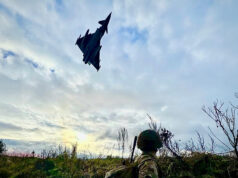
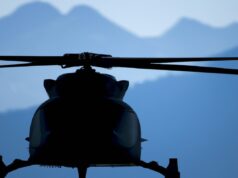
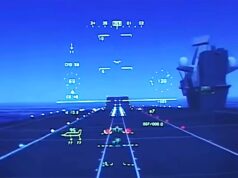



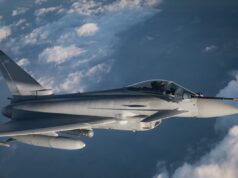
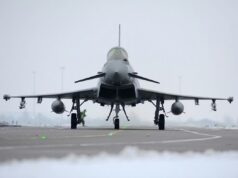
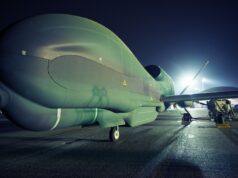


I think there is a need for as many of these as it is possible to make – possibly more.
The communication is now vague on quantities, production milestones, delays and so on. We are no longer in peace time.
Do we know how many extra the UK has ordered?
Great that production increasing, but the cost of these vs attacking drone etc is not sustainable in any long term conflict.
Need to identity and mature the cheaper defensive options
Aster/PAAMS forms the upper Tier of AAW Defence,there are many layers below that that are more cost effective and have been proved to be effective.
40mm CTA, 20mm, rockets are working.
CAMM is cheaper for a missile based system, as well as being UK manufactured. Airburst rounds are an even cheaper option for anti-drone use, they will almost certainly be used on the 57mm and 40mm cannons on the T31s, and potentially the 5″ gun on T26. I believe airburst munitions were shelved for the 4.5″ on the T45s, but now there is a good reason to reverse that. Realistically, DS30M and Phalanx on T26 and the carriers will have no trouble shredding drones, but their limited range might be a bit too close for comfort.
The standard munition for 4.5” is triple fused so can do air burst.
What wasn’t upgraded was the software module for AAW gunnery.
In that case there is even less of an excuse to not make the the 4.5″ gun AAW capable, a software upgrade requires less investment than making new munition types.
The answer may be something else when it was converted from electro hydraulic to electro servo operation.
The USN have been using airburst 5″ shells against both surface and airborne drones in the Red Sea Operations. These have been relatively successful, in that 3 to 5 rounds were used per target, to take out a drone. The shells cost about $2000 apiece, so considerably less than the latest version of ESSM at around $1.5M or a Seahawk launched Hellfire at about $200K for the latest version.
This success has led to the USN “unshelving” the hypervelocity projectile (HVP), that was shelved in 2021. This is now part of their Major Calibre Anti-Drone Air Program (MADCAP), that also includes the Coyote and Roadrunner drone interceptors. The guided HVP is expected to cost around $85K per round. Though the HVP can be used against much faster targets as well.
French navy, participating in « aspides » in the Red Sea has until now used the italian Otto Melara 76mm gun. It is accurate against drones for self protection, because of a canister ammunition. The detection is combined with Thales paseo sight. For the protection of distant merchant vessel, we use the Hélicoptère with sharp shooter. Aster are mainly used against balistic missiles.
Only 3 European navy sail regularly in the red sea: Italy, UK and France, for they are equiped correctly against air threats. Though other navies are patroling the baltics, the north sea and the Atlantic, which is usefull as well.
Phalanx vs drone, range isn’t an issue, even if the drone is supersonic.
True – often missed in the drone conversations.
But do you want to deplete Phalanx reloads when you could drop a drone at a longer range with a few 40mm shells?
That is where the but comes in – what is the drone is carrying Martlet type missile(s) then you need to keep the reaction times which is what distance gives.
Phalanx has issues of it’s own, with a limited range and high consumption of bullets. Higher caliber enables longer range and can be harder to depleet.
Which was my point in the second and third paragraphs?
Better to focus on something made in the UK like CAMM MR. If we need something very high end for ballistic missiles then go SM3 and SM6 in reduced numbers. Italy buys CAMM from us but’s I don’t think France buys anything.
We are not really participating in the Aster program just buying from France and there are more capable high end and cheaper medium end missiles available.
T83 should go for CAMM MR, SM3/6 load out.
No France won’t be buying CAMM, as they have just developed a new version of Aster 15, with nearly double the range. The problem for them is that we could pack 4 CAMMs in to the space occupied by 1 Aster. For example, the Horizon class compared to the T45, will lag behind in numbers available, e.g. 48 Sylver A50s vs 48 Sylver A50s + 24 CAMM. Unless, they increase the number of Slyver VLS cells on the Horizons.
The Aster 30 should really be compared with the latest version of the SM2MR Block3. However, Aster has a better terminal performance due to two factors. The first is that Aster is a two part missile, that uses a 1st stage booster, that when the fuel is expended, detaches from the 2nd stage “dart”. This makes the missile less draggy. So has more energy after expending its fuel. The second reason are the mid-body reaction jets. These enable the missile to keep up with high erratic manoeuvring threats.
The Aster 30 Block 1NT has some range advantage over the earlier Block 1. But is still way behind the height/range a SM6 can achieve. This is because SM6 is launched from the longer strike length VLS (7.7m long). Whilst Aster is fired from the shorter Sylver A50 (5m long). Meaning the SM6’s 1st stage booster is considerably bigger and carries more fuel. Which enables it reach altitudes over 100,000ft or ranges over 200 miles. The MoD did pay for some of the Block 1NT development work.
The CAMM-ER and MR being longer versions of the standard CAMM are all unitary missiles much like SM2. So they will be carrying more weight that Aster, after the fuel has been expended and the Aster’s dart separates. So the Aster should have more energy towards the terminal stage of the interception. Which is where multistage rockets win out. I understand the reasons why CAMM wasn’t made two stage. As this adds time and complexity to the program delivery, but for me is a wasted opportunity.
The T83 must get the strike length Mk41, as these are longer than the strike length Sylver A70, i.e. 7.7m vs 7m. More length means your misisle can have a bigger booster containing more fuel, which equals increased range/height/speed. You could quite easily put an Aster in the strike length Mk41. But with either a much longer 1st stage booster, or give it multiple stages. Multiple stages would be preferable as you can separate the stage’s empty weight. This would give Aster comparable range and height performance to SM6.
MBDA are developing the Aquila missile. This will be a direct competitor to both the latest versions of SM6 and THAAD. It is not an exoatmospheric weapon as per SM3 or Arrow 3. It will take a great deal of time and money for MBDA to attain the same level of confidence that these two exoatmospheric combat proven weapons now have. Keeping it endoatmospheric is easier and less costly. It would make more logical sense for Aquila to be launched from the Mk41 strike length cell, due to the length. But France may insist it is compatible with the Sylver A70, which would compromise some of its fuel capacity, therefore its range/height and speed.
SM6 and Thaad are good missiles, but short of what we want to achieve with Aquila. The aim of Aquila seem to be the interception of manouvering hyperveloce targets. SM6 and Thaad cannot cover a large area against these threats. The exepend their energy quickly if the target manouvers. The Aquila team is working on an appropriate answer to this combination of speed and agility.
Last Time Europeans worked together, meteor was created. Let’s see…
Hi Math, apparently MBDA are looking at two Aquila options, both multistage, but one with two stages and the other with three. The imagery and models so far released, show the missile to be much longer than Aster 30, but also the “dart” section being of a wider diameter. So it will definitely be more in keeping with the latest (fatter) version of SM6.
Northrop Grumman won the contract from the US missile defence agency to design and develop a dedicated hypersonic glide vehicle interceptor called the Glide Phase Interceptor. Again the imagery shows it as multistage missile. This is expected to be launched from the strike length Mk41. But I wouldn’t be surprised if the larger G-VLS being developed for the DDG(X) is used.
Hypersonic Glide Vehicles are said to operate between 20km and 100km (65,600ft and 328,000ft). Both the newer and future iterations of THAAD and SM6 are looking to intercept at 30.5km (150,000ft), perhaps up to 61km (200,000ft). Though I think that would be a stretch with their current designs. Interceptions at these heights will require more than aerodynamic surfaces to control direction, due to how thin the air is. SM3 is said to be able to engage targets from 100km (328,000ft) and above. So there is definitely a gap that needs filling, which is where the Glide Phase Interceptor comes in. Though Raytheon have intimated that the SM3 can intercept lower altitude targets as well!
At the altitudes above 30.5km (150,000ft), this is no longer the territory that either ramjets or scramjets can really operate, so you will have to use a rocket engine. Plus the engagement is more concerned at reaching the interception height in the shortest amount of time. Which is where a rocket engine scores over a ramjet/scramjet. Though there’s nothing stopping using a mid-stage section of a three stage missile from being a ramjet/scramjet. But I will fully expect the dart, to use reaction jets to control terminal interception.
This is the problem MBDA are facing, how will the missile be launched? As it has a knock on effect, on how the missile is designed. If they go down the Sylver route again, only a few countries will use it. Whereas, if they choose the Mk41 route, significantly more countries use it, so there’s a greater chance of achieving sales. But, I feel the current Sylver A70 is too short for this missile, unless MBDA are willing to compromise on the altitude the missile can attain (shorter length equals less fuel). The G-VLS (Growth-VLS) by Lockheed Martin is intriguing, as they’ve said it will have a 34″ (0.86m) diameter. Which is 8″ (0.2m) wider than the standard Mk41. Yet they haven’t said what the depth of the launcher will be. The US DoD have been saying these launchers are for hypersonic cruise missiles and glide vehicles. They could also easily house a surface to air missile as well. But, as SM3 shows, the standard strike length Mk41, should be adequate, as the SM3 can launch an interceptor into low earth orbit.
I fully expect MBDA to produce an awesome weapon, like you say, let’s see!
Hi DaveyB
Thank you for your French moment, very complète and very detailed.
I cannot add much, except to say that the 20 to 100 km altitude is the current area of interest, for attack or defense. The area beyond 100 km is also target for more resiliant systems.
Last but not least: the shield seems to cost more than the score. The recent war between Israël and Iran showed that Israel was « quickly » out of interceptor, not due to technology, but to budget. Iran also ran out of missiles, but their missiles are 5 times cheaper, for they are easier to manufacture (far less constraint to manœuvre). Sure, Israel had an Airforce, but the very strength of this force shrunk from 100 planes raids per day at the start to 10 planes within a week. Their airforce advantage was not so obvious.
So we will have to be carrefull in the expectations we have regarding missile defense, especially against Russia. The real goal is for Russia to understand that any attempt will be met by a strike, serious and determined, either through missile forces or air strikes.
The ramp up of strom shadow/scalp is for me a good message as well. The extension of the range of the AASM bomb is also the thing to do. Last, a French air force of 300 Rafale, # UCAV and # training / light attack aircraft as in the air, will help stabilise things with UK and Germany. The long range strike force will definitely be a plus. While defense is a must have for strategic assets and moral, one must keep in mine it’s réal place and that no wars are harmless.
Hum not « French moment » but « answer ». I don’t know how automatique correction pulled that one out …